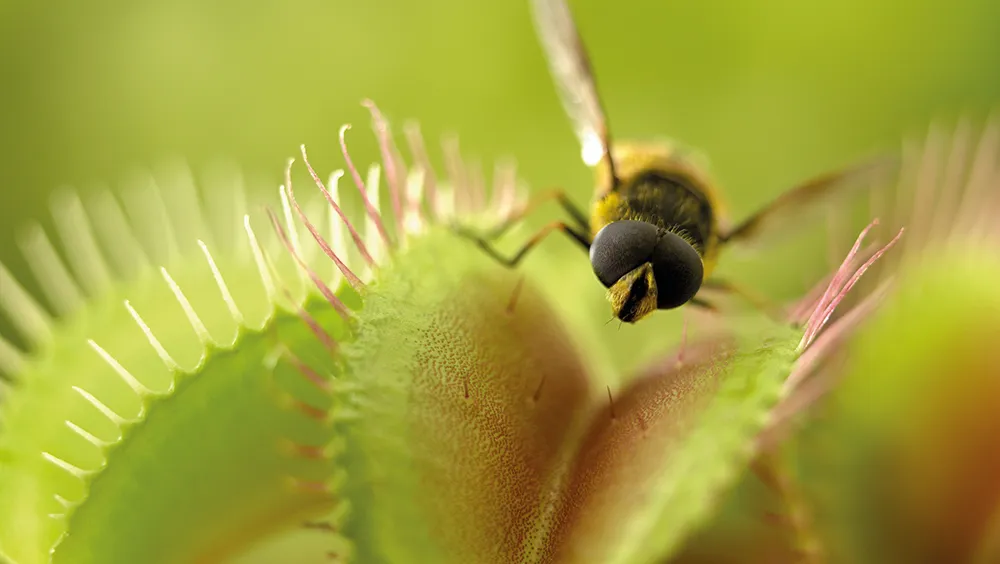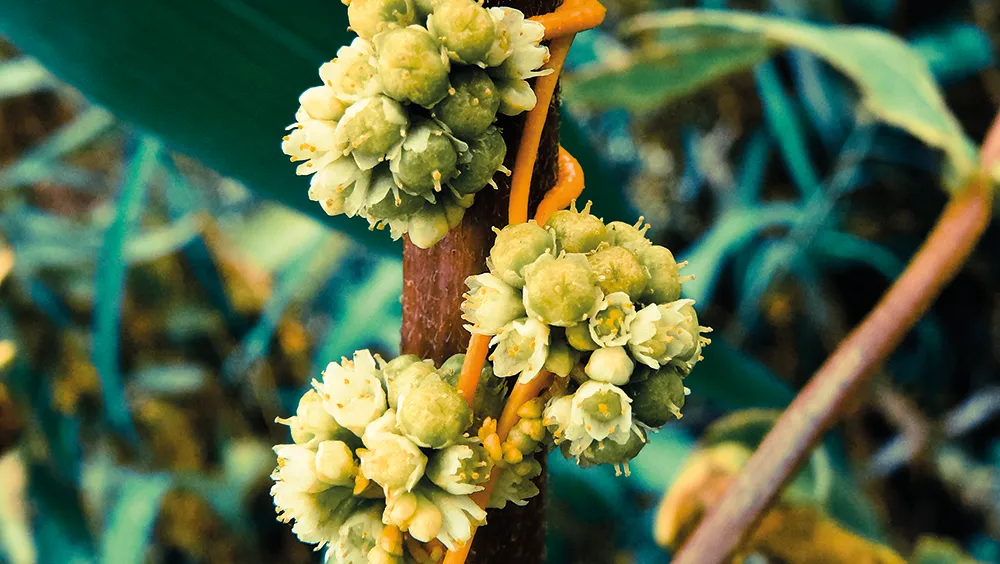1
The carnivore

Venus flytraps rely on touch to know when they should close on a victim, and they have even learned to count in order to avoid false positives.
To ensure that they’re capturing a living, wriggling insect, traps only shut after two taps, and will only begin digesting prey after three more distinct touches.
2
The strangler

A parasitic plant known as the dodder vine locates its prey by scent.
When odours from a tomato plant are wafted towards the vine, these chemical cues prompt the plant to send a tendril snaking towards the source. This vampiric tendril will wrap around its victim before extracting the goodness from within.
3
The bat-lover
A species of Bornean pitcher plant gets its nutrients from bat poo, and the best way to secure a steady supply of this niche foodstuff is by encouraging bats to roost inside it.
To do this, the plant has evolved a reflective hood that bounces bats’ calls back at them, enticing them to visit and settle down.
Read more:
- Can the wood-wide web really help trees talk to each other?
- Wild ideas in science: Mushrooms could save the world
- Five complex networks found in nature
4
The fibre-optic sunlight cable
Plants have light receptors in their roots, but until recently the reason for this was unclear.In 2016, research revealed that the stem of the thale cress plant behaves like a fibre optic cable, funnelling sunlight down into the root system, where it triggers the production of proteins that promote healthy growth.
5
The listener

Classical music won’t make your plants grow bigger but that doesn’t mean they are completely indifferent to sounds in their environment.
Playing recordings of chomping caterpillars to Arabidopsis plants is enough to make them flood their leaves with chemicals designed to ward off attackers.